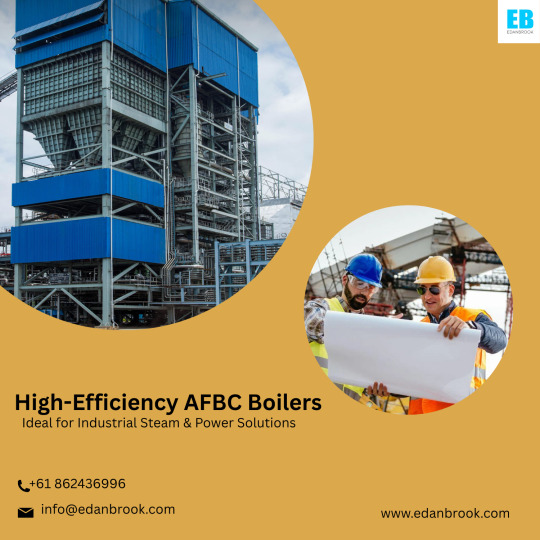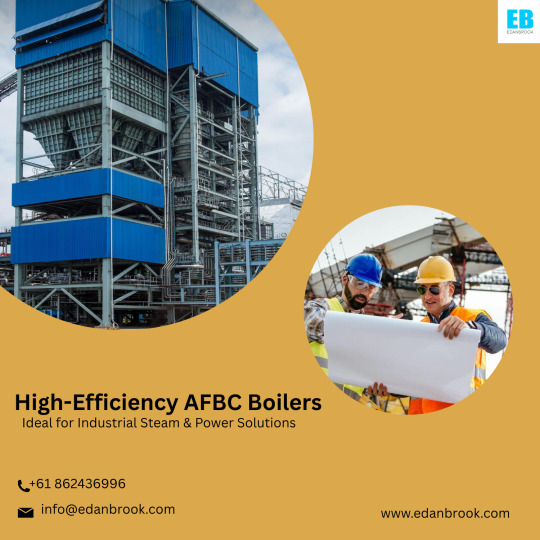Don't wanna be here? Send us removal request.
Text
What are the key differences between bi-drum and single-drum AFBC boilers in terms of application?
Exploring the Power and Potential of AFBC Boilers
In today’s fast-evolving industrial landscape, businesses need power generation systems that are not only efficient and cost-effective but also adaptable to various fuels and environmental standards. Among the top technologies fulfilling these expectations are Atmospheric Fluidized Bed Combustion (AFBC) Boilers. Whether for process heating or captive power generation, AFBC boilers have emerged as a superior choice across multiple industries due to their unmatched fuel versatility, thermal efficiency, and low operational costs.
Let’s explore the unique features, benefits, and working of AFBC boilers and understand why they continue to be a reliable and future-ready solution in industrial power systems.
What Is an AFBC Boiler?
An Atmospheric Fluidized Bed Combustion (AFBC) boiler is a type of combustion system that burns solid fuels suspended in a bed of particles – typically sand – fluidized by air from below. The technology enables efficient and uniform combustion at relatively low temperatures (around 850°C), minimizing emissions and maximizing energy extraction from fuels.
Superior Combustion Efficiency Across Fuel Types
One of the key strengths of AFBC boilers is their fuel flexibility. These boilers can burn a wide range of fuels such as:
What sets AFBC boilers apart is their ability to maintain combustion efficiency of over 85%, regardless of the ash content of the fuel. This makes them extremely cost-effective, especially in markets where fuel availability can vary or where waste by-products from other processes (like rice husk or washery rejects) are used as fuel.

Key Benefits of AFBC Boilers
When considering a boiler for industrial use, performance, reliability, and efficiency are non-negotiable. AFBC boilers are engineered to offer all three — and more:
High Thermal Efficiency
By using fluidized bed combustion, AFBC boilers achieve superior heat transfer and fuel utilization.
Quick Startup & Simple Operation
AFBC boilers are designed to be easy to operate, with quick startup times that help meet production schedules without delays.
Low Maintenance Design
With fewer moving parts and wear components, maintenance needs are greatly reduced.
Fast Load Response
Industrial processes often involve varying steam demands. AFBC boilers can quickly respond to such fluctuations, ensuring consistent performance.
Low Operating Cost
The combination of high efficiency, low auxiliary power consumption, and multi-fuel support leads to lower operating expenses.
Environmentally Friendly
Emissions such as NOx (nitrogen oxides), SOx (sulfur oxides), and CO (carbon monoxide) are significantly lower due to low combustion temperatures and the possibility of in-bed limestone addition for sulfur capture.
Smart Engineering for Long-Term Performance
AFBC boilers are not just efficient — they’re built for durability and seamless operation. The water wall membrane structure ensures improved heat absorption and enhanced structural strength. Another standout feature is the four-stage steam separation system which eliminates carryover, resulting in cleaner and drier steam.
The studded in-bed evaporator tubes, immersed directly in the fluidized bed, offer increased heat transfer while reducing erosion. This design enhances boiler life and maintains consistent performance even under high-load conditions.
The economizer design is also optimized. Using specific pitch and velocity settings helps reduce tube wear, thereby increasing equipment life. High-efficiency ID (Induced Draft) and FD (Forced Draft) fans not only save energy but also operate with reduced noise, contributing to a better working environment.
Innovative Combustion Chamber with Hopper Bottom Design
The hopper bottom design of AFBC boilers eliminates the need for moving parts inside the combustion chamber. This helps in:
Minimizing mechanical maintenance
Promoting uniform temperature distribution
Avoiding hot spots and fuel build-up
As a result, you get complete combustion with reduced excess air, translating into better fuel economy and fewer emissions. Additional advantages include:
Reduced ash agglomeration
Better control of alkali content
Efficient disposal of coarse ash particles
Enhanced SOx reduction with limestone injection
Moreover, the availability of under-bed and over-bed fuel feeding systems improves combustion efficiency and makes it easier to handle multiple fuel types simultaneously.
1 note
·
View note
